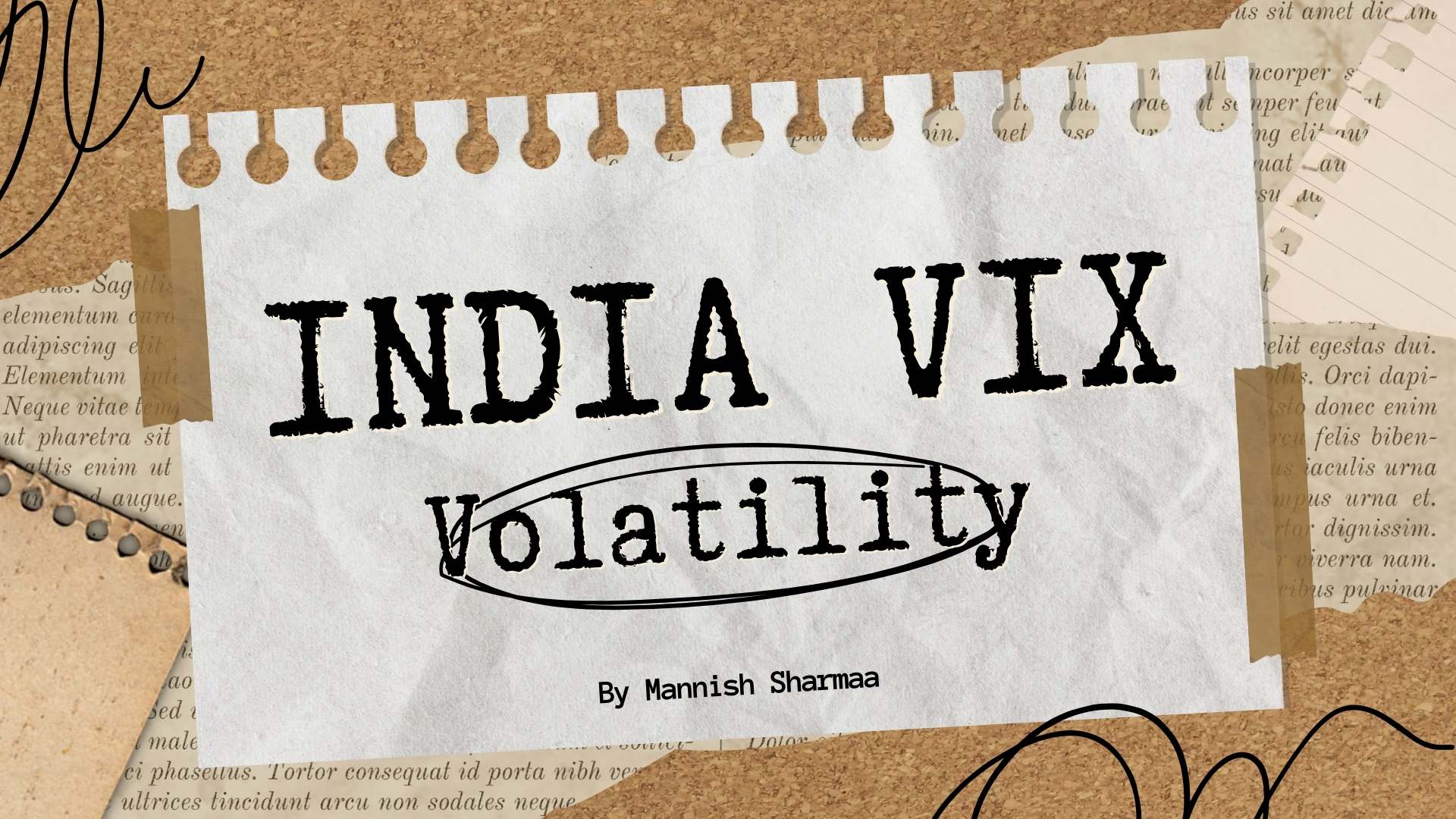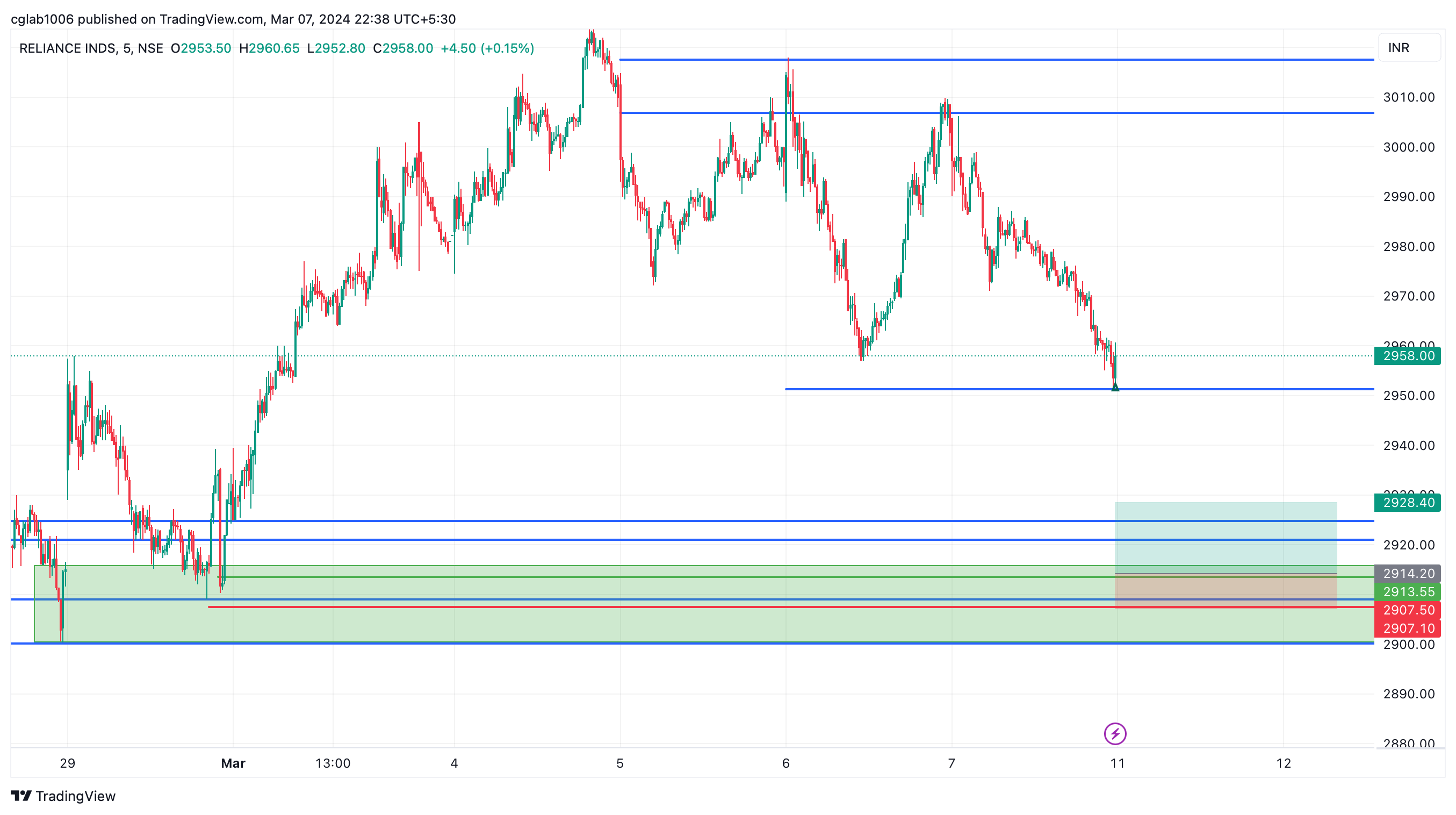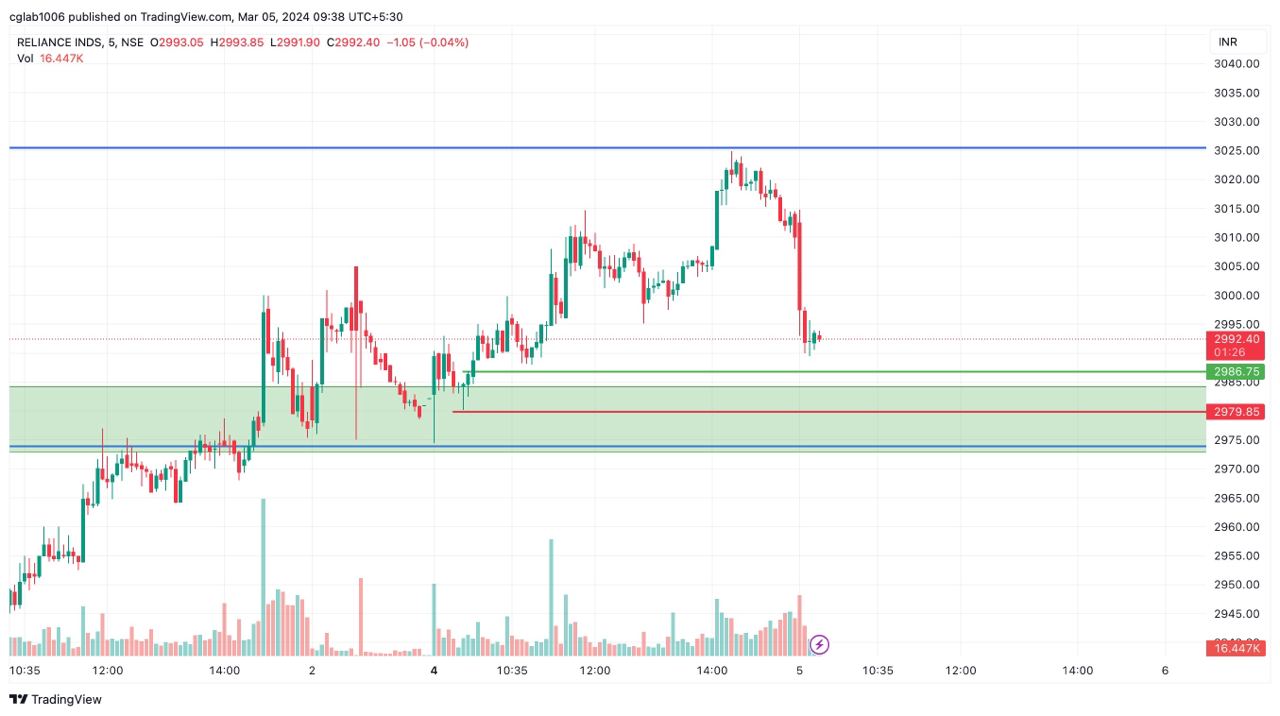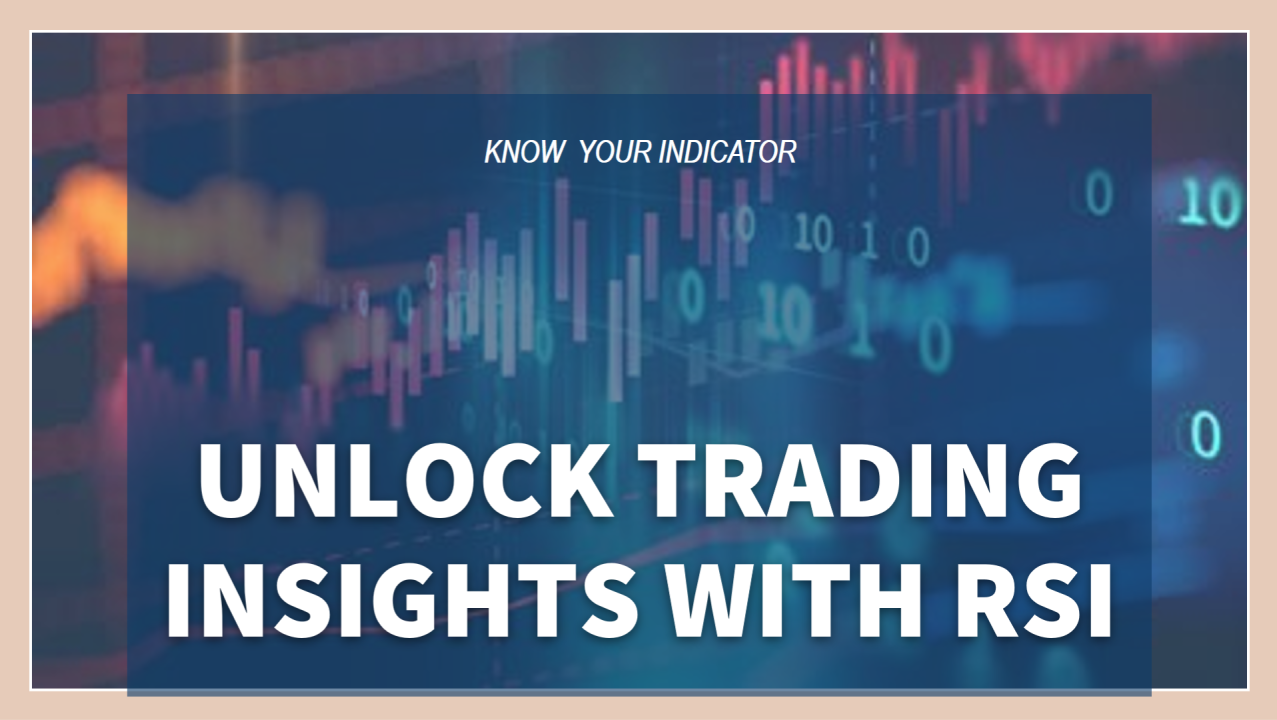Blog Details

Understanding the Dynamics of India VIX and Its Impact on Nifty 50
India VIX is the abbreviated term for the India Volatility Index, a metric that gauges the market's anticipation of volatility in the short term. Put simply, it reflects the expected annual volatility among traders for the upcoming 30 days within the Nifty50 Index. The calculation of India VIX is based on the Black & Scholes (B&S) Model, incorporating crucial variables such as strike price, stock market price, time to expiry, risk-free rate, and volatility. The National Stock Exchange (NSE) introduced India VIX in 2008, with the concept itself being a trademark of the Chicago Board Options Exchange (CBOE).
Certainly, this simplified explanation effectively conveys the essence of India VIX. It can be expressed as follows: India VIX represents the anticipated annual change in the Nifty 50 index over a 30-day period. For instance, if the current India VIX is 15, it implies an expected volatility of 15% over the next 30 days.
For Example Currently nifty is at 21930 and VIX is 15.50 (at present),
India VIX is important for several reasons in the financial markets:
1. Risk Perception: India VIX is a measure of market participants' expectations and perceptions of future volatility. A higher VIX suggests that investors anticipate more significant price fluctuations, indicating higher market risk.
2. Investment Decision-making: Traders and investors use India VIX as a tool for making informed investment decisions. A high VIX may lead investors to adjust their portfolios, such as hedging strategies or reducing exposure to higher-risk assets.
3. Options Pricing: The Black & Scholes Model, which is used to calculate India VIX, is crucial in options pricing. Traders use options to hedge against or speculate on future price movements, and understanding the expected volatility helps in determining option prices.
4. Market Sentiment: India VIX reflects market sentiment. When there is uncertainty or fear in the market, the VIX tends to rise. Monitoring changes in the VIX can provide insights into shifts in investor sentiment.
5. Risk Management: For both individual traders and institutional investors, managing risk is a critical aspect of financial decision-making. India VIX serves as a risk management tool, helping market participants assess and prepare for potential market movements.
6. Market Stability: Regulators and policymakers also pay attention to volatility indices like India VIX to gauge market stability. Sudden spikes in volatility may indicate systemic risks that need to be addressed.
In summary, India VIX is important as it provides a quantitative measure of expected market volatility, aiding investors, traders, and regulators in making informed decisions, managing risks, and understanding market sentiment.
The "ideal" range for the VIX can vary depending on the perspective and strategy of the market participants. Generally, the VIX is considered low when it's below 20 and high when it's above 30. Here's a broad breakdown of VIX levels and their potential interpretations:
- Low VIX (Below 20):
- Indicates low market volatility.
- Suggests a relatively stable and complacent market environment.
- Traders might view this as a signal for potential bullish conditions.
- Investors might consider it a time of lower risk.
- Moderate VIX (20-30):
- Represents a moderate level of market volatility.
- Suggests a balanced market sentiment with some uncertainty.
- Traders might find opportunities in such market conditions.
- Investors may exercise caution and ensure appropriate risk management.
- High VIX (Above 30):
- Indicates high market volatility.
- Suggests increased fear and uncertainty in the market.
- Traders may find more opportunities for short-term trading.
- Investors may become more defensive and implement risk mitigation strategies.
It's important to note that these are general guidelines, and the interpretation of VIX levels can vary based on individual risk tolerance, investment goals, and market conditions. Additionally, the VIX is a mean-reverting index, meaning that it tends to revert to its historical average over time. Extremely low or high VIX levels may not persist for extended periods.
India VIX computation methodology
(reference is taken from https://nsearchives.nseindia.com/web/sites/default/files/inline-files/India_VIX_comp_meth.pdf)
India VIX uses the computation methodology of CBOE, with suitable amendments to adapt to the NIFTY options order book using cubic splines, etc
The factors considered in the computation of India VIX are mentioned below:
1) Time to expiry:
The time to expiry is computed in minutes instead of days in order to arrive at a level of precision expected by professional traders.
2) Interest Rate:
The relevant tenure NSE MIBOR rate (i.e. 30 days or 90 days) is being considered as risk-free interest rate for the respective expiry months of the NIFTY option contracts
3) The forward index level:
India VIX is computed using out-of-the-money option contracts. Out-of-the-money option contracts are identified using forward index level. The forward index level helps in determining the at-the-money (ATM) strike which in turn helps in selecting the option contracts which shall be used for computing India VIX. The forward index level is taken as the latest available price of NIFTY future contract for the respective expiry month.
* “VIX” is a trademark of Chicago Board Options Exchange, Incorporated (“CBOE”) and Standard & Poor’s has granted a license to NSE, with permission from CBOE, to use such mark in the name of the India VIX and for purposes relating to the India VIX.
4) Bid-Ask Quotes
The strike price of NIFTY option contract available just below the forward index level is taken as the ATM strike. NIFTY option Call contracts with strike price above the ATM strike and NIFTY option Put contracts with strike price below the ATM strike are identified as out-of-the-money options and best bid and ask quotes of such option contracts are used for computation of India VIX. In respect of strikes for which appropriate quotes are not available, values are arrived through interpolation using a statistical method namely “Natural Cubic Spline”
After identification of the quotes, the variance (volatility squared) is computed separately for near and mid-month expiry. The variance is computed by providing weightages to each of the NIFTY option contracts identified for the computation, as per the CBOE method. The weightage of a single option contract is directly proportional to the average of best bid-ask quotes of the option contract and inversely proportional to the option contract’s strike price
Computation of India VIX
The variance for the near and mid-month expiry computed separately are interpolated to get a single variance value with a constant maturity of 30 days to expiration. The square root of the computed variance value is multiplied by 100 to arrive at the India VIX value.
How to calculate volatility for different Time Frame
The India VIX (Volatility Index) is designed to represent the market's expectation of volatility over the next 30 calendar days. While the index itself is specifically constructed for a 30-day horizon, you can use it as a proxy to estimate volatility for different time frames, such as weekly or daily, based on certain assumptions.
Here's how you might use India VIX to estimate volatility for different time frames:
1. Daily Volatility:
If you want to estimate the daily volatility based on the India VIX, you can assume that daily volatility is proportional to the square root of time. The formula to estimate daily volatility from India VIX is:
Daily Volatility=India VIX/ sqrt of 365
2. Weekly Volatility:
To estimate weekly volatility based on India VIX, you can use the following formula:
Weekly Volatility= India VIX/ sqrt of 52
3. Monthly Volatility=India VIX/sqrt of 12
Relation of Index and India VIX
India VIX and Nifty 50 are closely related, and their relationship is often characterized by an inverse correlation. Here's how they are connected:
1. Inverse Relationship:
- India VIX and Market Volatility: India VIX is a volatility index that reflects the market's expectation of volatility over the next 30 days. When India VIX is high, it suggests that market participants anticipate greater price fluctuations in the Nifty 50 index.
- Nifty 50 and Market Stability: On the other hand, the Nifty 50 represents the market performance of the 50 largest and most liquid stocks on the National Stock Exchange (NSE). Generally, when market participants expect higher volatility (as indicated by a high India VIX), it can be associated with uncertainty and a potential decrease in stock prices, affecting the Nifty 50 negatively.
- Inverse Correlation: Therefore, there is often an inverse correlation between India VIX and Nifty 50. When India VIX is high (indicating higher expected volatility), Nifty 50 may experience declines, and vice versa.
An inverse correlation has been observed between VIX and Nifty. Historically, the VIX has tended to trade within the range of 10-12. Therefore, if the VIX remains consistently at this level for an extended period, it can be reasonably inferred that any significant news might act as a catalyst, causing the VIX to rise and the Nifty to decline. Conversely, when the VIX is in the range of 26-30, a similar relationship holds true. In this case, positive news could lead to a decline in the VIX, resulting in an upward movement in the Nifty.
2. Market Sentiment Indicator:
- Fear and Greed: India VIX is sometimes referred to as the "fear gauge" because it tends to rise during periods of market uncertainty and fear, and it falls during more stable and confident market conditions.
- Investor Sentiment: A rising India VIX may suggest that investors are anticipating increased market volatility, potentially leading to a decline in stock prices. Conversely, a falling India VIX may indicate a more optimistic and stable market sentiment.
3. Trading Strategies:
- Hedging and Speculation: Traders and investors often use India VIX to inform their trading strategies. A high India VIX may lead to increased demand for hedging instruments (like options) as investors seek to protect their portfolios from potential market downturns.
- Contrarian Indicator: Some traders use extreme India VIX levels as contrarian indicators. For example, exceptionally high levels might be interpreted as an opportunity for bullish positions if there's a belief that fear is excessive.
4. Impact on Option Prices:
- Options Pricing: India VIX is a key factor in determining option prices. Higher India VIX levels tend to result in higher option premiums due to increased perceived risk. This, in turn, impacts the cost of hedging and speculation through options trading.
In summary, India VIX and Nifty 50 are linked through the expectation of market volatility. A high India VIX often corresponds to a more uncertain market environment, potentially leading to lower Nifty 50 values. Traders and investors closely monitor this relationship to gauge market sentiment and make informed decisions.
If you are eager to delve deeper into the intricacies of India VIX, learning how to apply its principles in live trading scenarios and options, "The Mark the Market Trading Academy" in Bhopal offers an invaluable opportunity. This academy is dedicated to providing comprehensive insights into the world of trading, equipping individuals with the knowledge and skills needed to navigate financial markets successfully.
Copyright | MarkTheMarket . All Rights Reserved











Leave a Comment